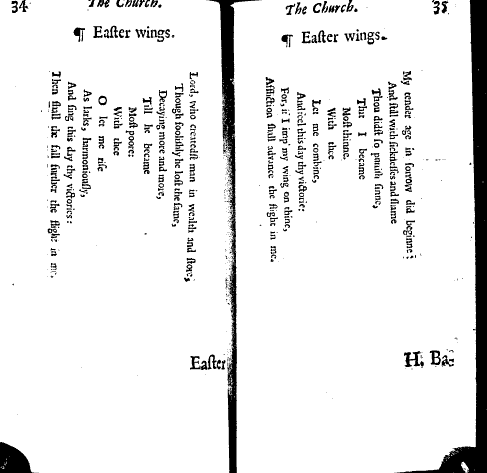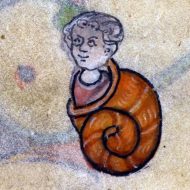George Herbert and The Temple
George Herbert, born April 3rd 1593, came from a family in the Marches, around Montgomery Castle, and during his time there he cultivated a view upon family life. His father died when he was three and their family travelled to Oxford and then London, to be closer to his elder brother Edward, who was also to become famous as a poet and also as a diplomat. He attended the Westminster School, which was a grammar school, and excelled in Greek, Latin and music, learned French, Italian and Spanish. Indeed, he even composed his own pieces for the flute. His mother remarried in 1609 to Sir John Danvers, and their household in Chelsea became a center for the intellectual society. One of the more famous people who visited was John Donne, with whom Herbert himself was to forge a deep friendship. Herbert was admitted to Trinity College in Cambridge as a scholar and in 1612 his fist published work appeared, two latin poems there. He continued his career in the college concerned with divinity and in 1620 became its orator. He entered parliament from his family seat in Montgomery in 1623. He was dispensed from there in 1624 and soon after was ordained as a deacon in Lincoln. This sudden change in Herbert’s way of life is an important part of his poetry. The secular life at odds with the clergical one. The effort to balance these two can be seen in some of his poems (e.g. ‘In cities, theaters, gardens, parks, and courts’ in ‘Redemption’). During this crucial time in his life he was guided in his decision by none other than John Donne, the liberal poet turned priest, so he had been in a similar situation himself, not only writing devotional poems both (Donne’s Holy Sonnets). In 1628 he resigned from his oratorship and left his stepfather’s home in Chelsea to his elder brother’s house at Dauntesey in Wiltshire. It is widely believed that here Herbert wrote the most of The Temple.

The Temple is a complex of poems devotional and religious, exploring themes such as faith, earthly life, doubt and love of God. The book is divided into three parts: ‘The Church-porch’, ‘The Church’, and ‘The Church Militant’. Herbert sent a manuscript shortly before his death to Nicholas Ferrar in Little Gidding, telling him to publish it if he saw it was worth to publish, otherwise to burn it. In 1633, The Temple: Sacred Poems and Private Ejaculations, was published with a preface by Ferrar. Herbert experimented with lineation and this is most evident in ‘Easter Wings’. Here the two parts of the poem resemble wings themselves, thus underlining the crucial function of poem as prayer, which adds a deeper layer of meaning to them. It is, at first glance, extremely easy to stereotype Herbert, as the holy and virtuous poet, but when one actually looks at the poems, they underline a deep and subtle force of doubt which is very human and relatable. Otherwise how could they be valuable to people other than priests and prayers.
Mustafa
